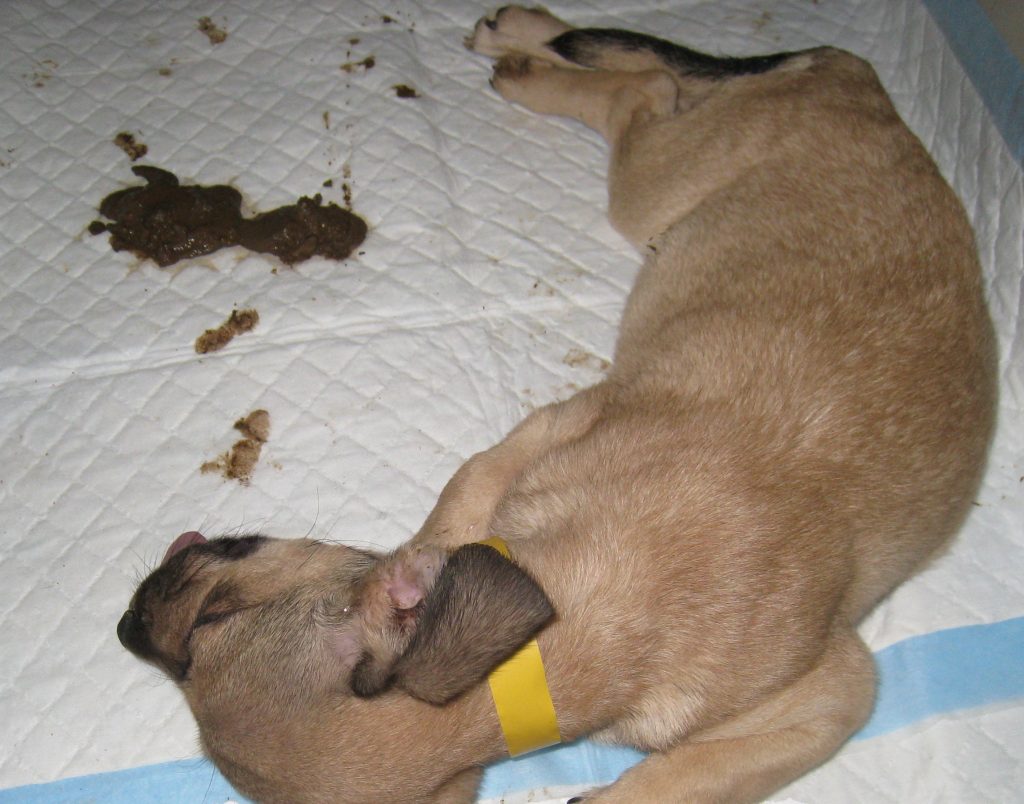Module 4: Healthcare practices for common contagious infectious diseases
Canine and Feline Parvovirus

Canine parvovirus (CPV) and feline parvovirus (FPV) (aka panleukopenia virus) are highly contagious viral diseases that commonly cause life-threatening illness in dogs and cats in animal shelters. Every shelter is a high-risk environment for exposure to CPV and FPV and most have been affected by outbreaks that are very costly with regard to animal suffering and death, reallocation of resources to management and eradication, staff morale, and resultant negative public image.
Review the Canine and Feline Parvovirus Infections in Shelters 2025 document for an overview of populations at risk, viral incubation and shedding times, clinical disease, diagnosis, and basic strategies for management and prevention in shelters.
Key Takeaways for Canine and Feline Parvoviral Infections in Shelters
- Every shelter is a high-risk environment for exposure to CPV and FPV.
- Most puppies and kittens entering shelters do not have protective immunity to parvovirus.
- Panleukopenia outbreaks due to FPV commonly occur in the summer and fall (“kitten season”) when large numbers of kittens are admitted to shelters.
- The primary route of exposure to CPV and FPV is nasal or oral contact with virus-containing feces or contaminated surfaces.
- Viral replication in oropharyngeal lymphoid tissue occurs within 24 hours of infection followed by systemic spread to the intestines, bone marrow, and other lymphoid tissues.
- The incubation period is typically 5 to 7 days.
- Parvovirus shedding in saliva and feces starts before onset of clinical signs.
- Clinical signs include fever, hypersalivation from nausea, vomiting, diarrhea, dehydration, leukopenia, and death from hypovolemic shock and sepsis caused by translocation of intestinal bacteria into the bloodstream.
- The most common cause of sudden death in kittens and cats in shelters is peracute septic shock due to FPV.
- Parvovirus infection in neonates <4 weeks old causes cerebellar hypoplasia in kittens and myocarditis and heart failure in puppies.
- The mortality rate is 90-100% in untreated kittens and puppies.
- Adults without immunity can have mild transient diarrhea or subclinical infection.
- Virus shedding typically stops in conjunction with clinical recovery due to elimination of virus by the systemic and local intestinal immune responses.
- Total duration of virus shedding from initial infection to clinical recovery is usually 2 weeks.
- Parvovirus infection cannot be reliably diagnosed based on the age of the dog or cat and the clinical signs since other diseases mimic parvo and panleuk .
- The fecal parvovirus antigen POC tests are used to confirm diagnosis in animals with compatible clinical signs. These tests have low sensitivity and false negative results can occur in 25% or more of infected animals. However, positive POC tests, including weak positives, are highly likely to be true positives in cats with compatible clinical signs. Suspect cats with an initial negative POC antigen test should be re-tested the next day as virus shedding in feces can be intermittent.
- The most effective strategy for limiting transmission of CPV or FPV in the shelter is the prompt isolation of sick dogs and cats with positive test results.
- Parvoviruses are very durable in the environment and require use of bleach, Wysiwash, Trifectant, or Rescue products for effective inactivation.
- Vaccination of all dogs and cats 4 weeks of age and older is the cornerstone for reducing parvoviral transmission in shelters.
Canine Parvovirus and Feline Parvovirus (panleukopenia)
- Pathogen type: unenveloped RNA virus
- Transmission route: nasal or oral contact with virus-containing feces or contaminated surfaces.
- Incubation period: 5 to 7 days
- Shedding period: 2 weeks
- Persistence in environment: yes
Test Your Knowledge

